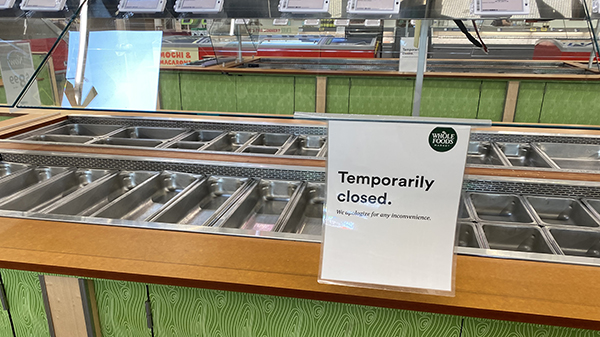Whole Foods Market Expands Dark Store Concept
Posted at: https://m.andnowuknow.com/bloom/whole-foods-market-expands-dark-store-concept/kayla-webb/68212
AUSTIN, TX – In early April, Amazon and Whole Foods Market revealed a unique strategy that included transforming the organic grocer’s locations into dark stores for rising online grocery and delivery needs. Now, with the demand for grocery delivery only continuing to climb, Whole Foods Market is expanding the dark store concept and converting additional locations.
“With stay-at-home orders in place, customers have generated unprecedented demand for grocery delivery,” a spokesperson for Whole Foods Market disclosed to news source Fox Business. “As we navigate the challenges associated with COVID-19, we continue to find ways to increase delivery availability while navigating safety measures and social distancing.”
Originally, only one store in Woodland Hills, California, was transformed into a “temporary online-only store.” This week, however, the grocer converted five additional locations in New York City, New York; San Francisco, California; Baltimore, Maryland; Austin, Texas; and Castle Rock, Colorado, with a store in Chicago, Illinois in the works as well.
Some of these stores, like the ones in Castle Rock and Baltimore, are brand new, with Whole Foods overhauling them to the online-only model before opening them to the public.
Does Whole Foods Market have more store locations lined up for this online-only model? And is this model the new normal for grocery retail? AndNowUKnow will continue to report on the freshest produce news.
Whole Foods Goes Dark In Online Grocery Catch-up
When Amazon bought Whole Foods, I immediately thought Amazon would convert part of each of the 400+ Whole Foods physical locations to facilitate roll-out of online order and grocery pickup.
That didn’t happen.
Perhaps they were being cautious because the market wasn’t ready for it. And now, the company is closing sales floor space and opening so-called “dark stores” for online order fulfillment.
The latest to go dark is a store in Chicago. Business Insider reports six of the company’s brick-and-mortar stores were shifted to a dark concept. Three were under construction and the company pivoted to online instead of opening sales floor, a move the company says is temporary.
The back-and-forth of Amazon Prime grocery and Amazon Fresh contraction and expansion over the past three years has been a puzzler for me. Amazon is an e-commerce company. They bought a grocery store. Why was this not a better marriage?
And now, amid arguably the biggest crisis for the American food supply chain, retailers find themselves behind the 8-ball trying to ramp up online grocery to meet staggering demand.
Imagine if Whole Food stores had been better positioned for online grocery fulfillment two years ago.
Imagine if Amazon’s massive network of e-commerce was better suited to fresh foods.
Actually, the more I think about it, this would have been a nightmare for mainstream retail in the U.S. Amazon would have sucked a huge portion of that hesitant online grocery shopper into the gooey, warm embrace of Prime and they wouldn’t have come back.
I’m one of an estimated 112 million Amazon Prime members in the U.S. I check Prime first for everything. I just bought catnip seeds and yoga pants on Amazon Prime (two separate orders, of course, because who cares when shipping is free with no minimum order?) and they’ll be here tomorrow.
It’s so easy, but we all know grocery is not yoga pants and catnip seeds, and traditional grocers have a leg up when it comes to fresh.
Now is the time to ensure every online shopper is happy with their order, and coming back for more.
